Abstract
An improved method for extraction of plant DNA is described. Quantitative species comparisons based on DNA-DNA hybridization are reported for several members of the family Leguminosae and for barley, wheat and rye. A maximum of about 10% homology in DNA polynucleotide sequences is found between monocotyledons and dicotyledons tested, whereas 20 to 90% homology is observed within a family. Species compared using a DNA fraction enriched for redundant polynucleotide sequences generally appear to be more closely related than when whole DNA is used. DNA-DNA hybridization may be useful in systematic and evolutionary study of plants, and also as a possible screening procedure for interfertility of species.
Full text
PDF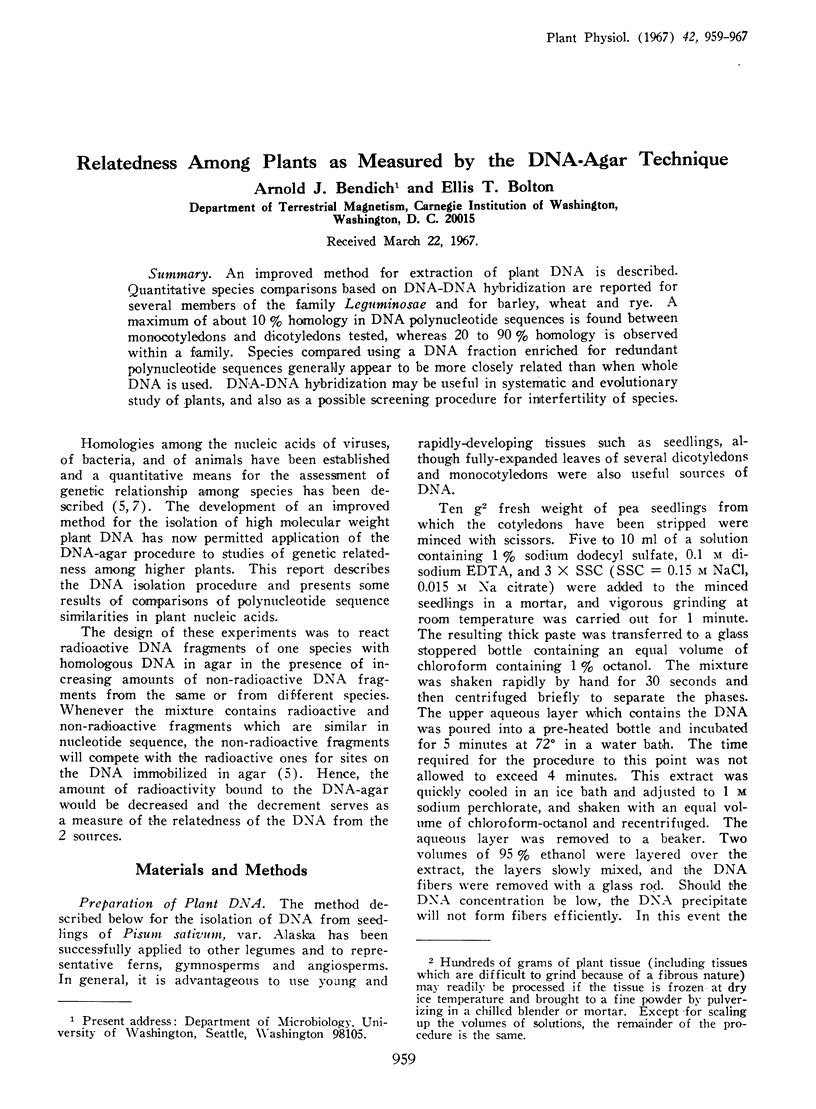
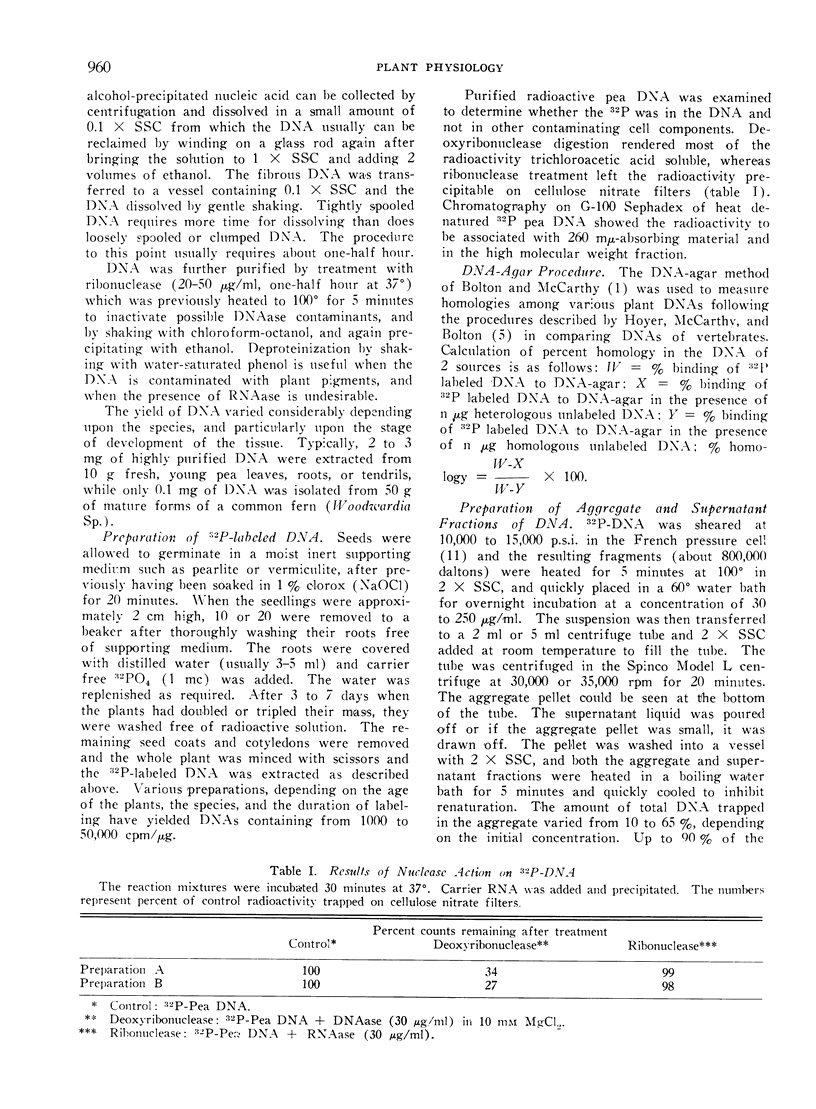
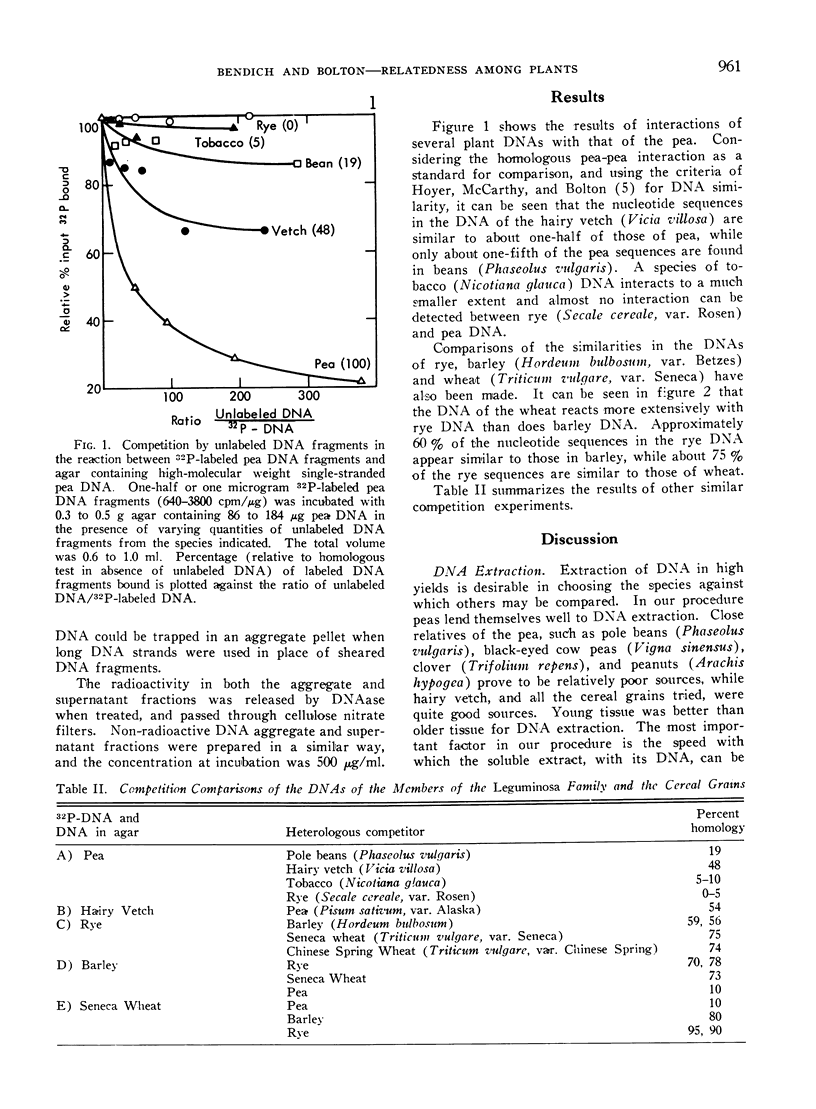
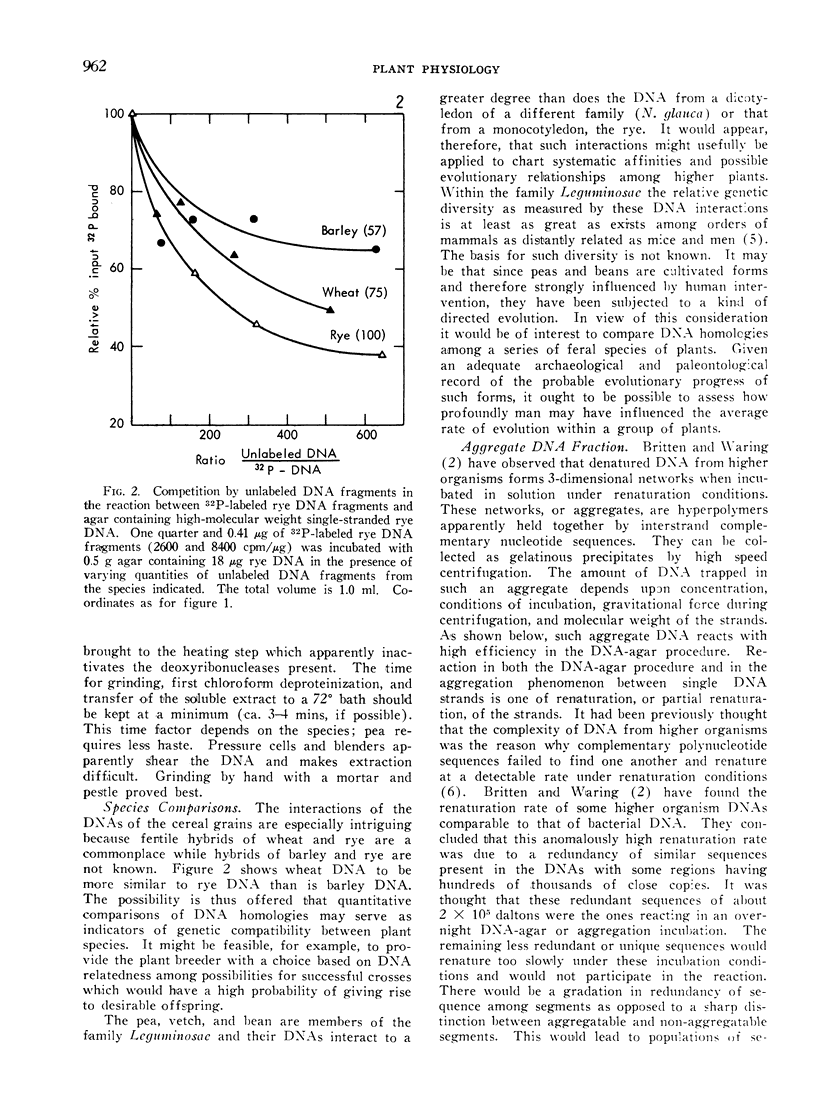
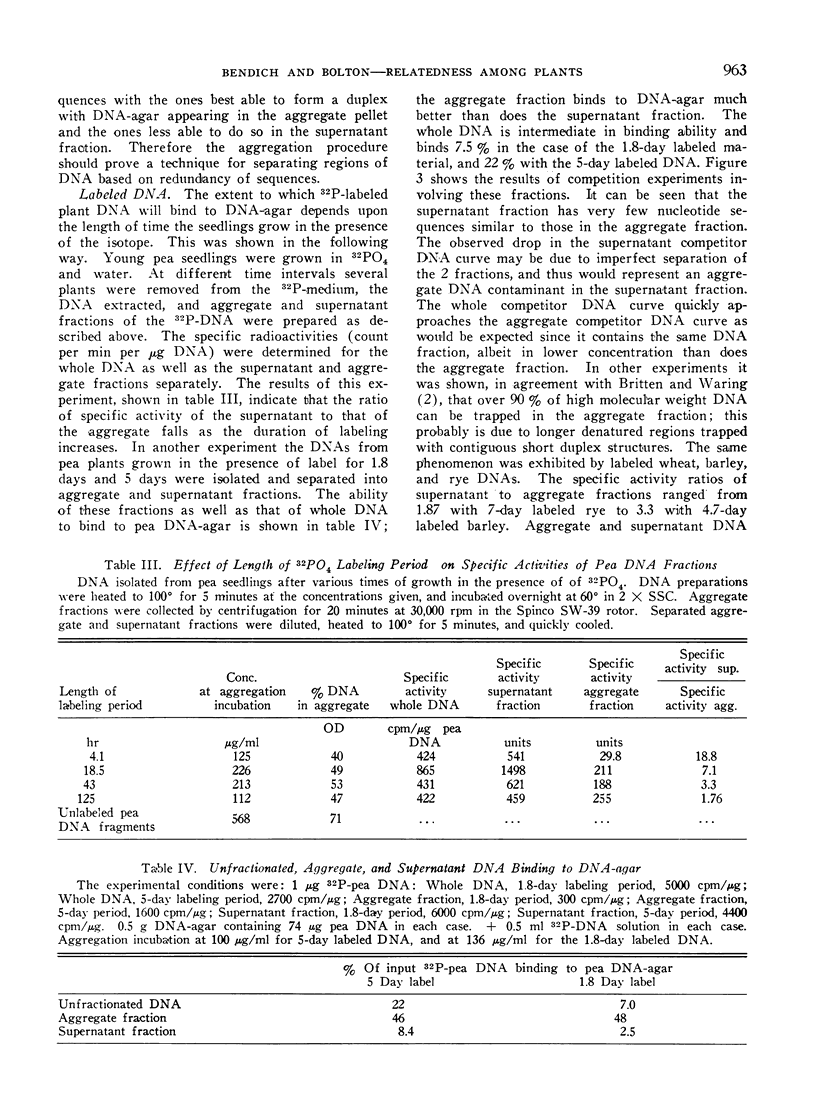
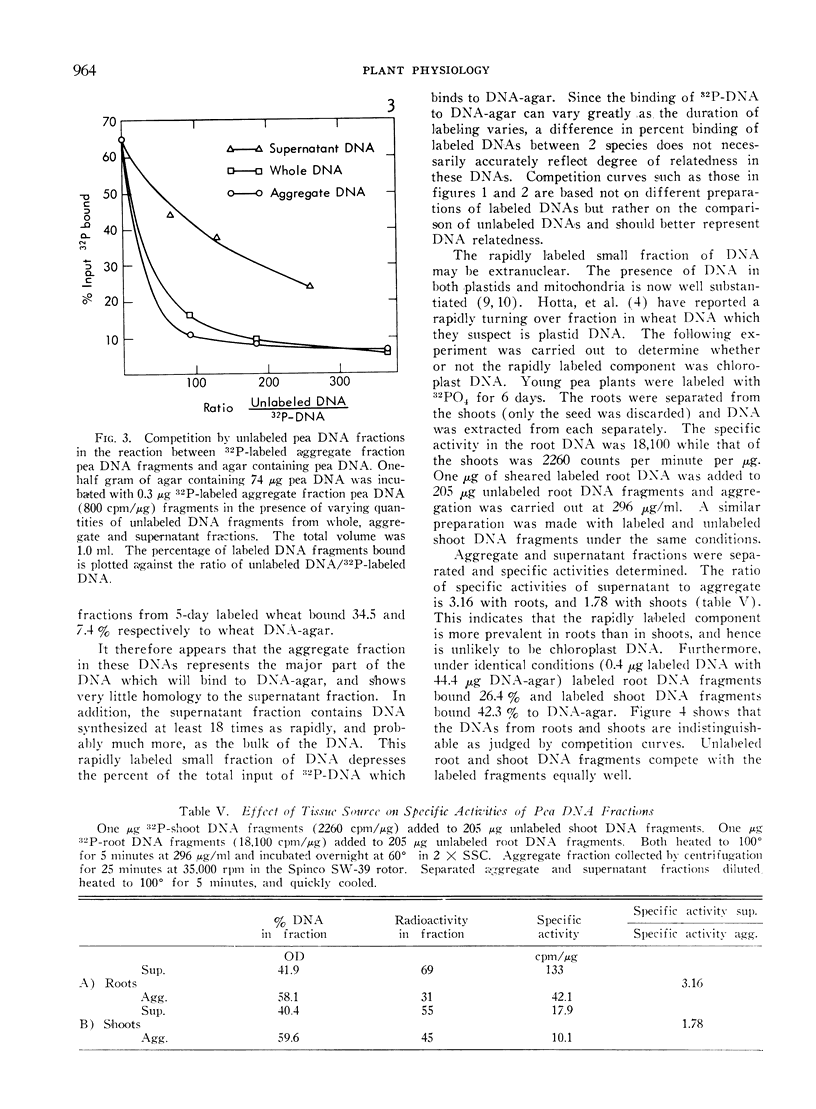
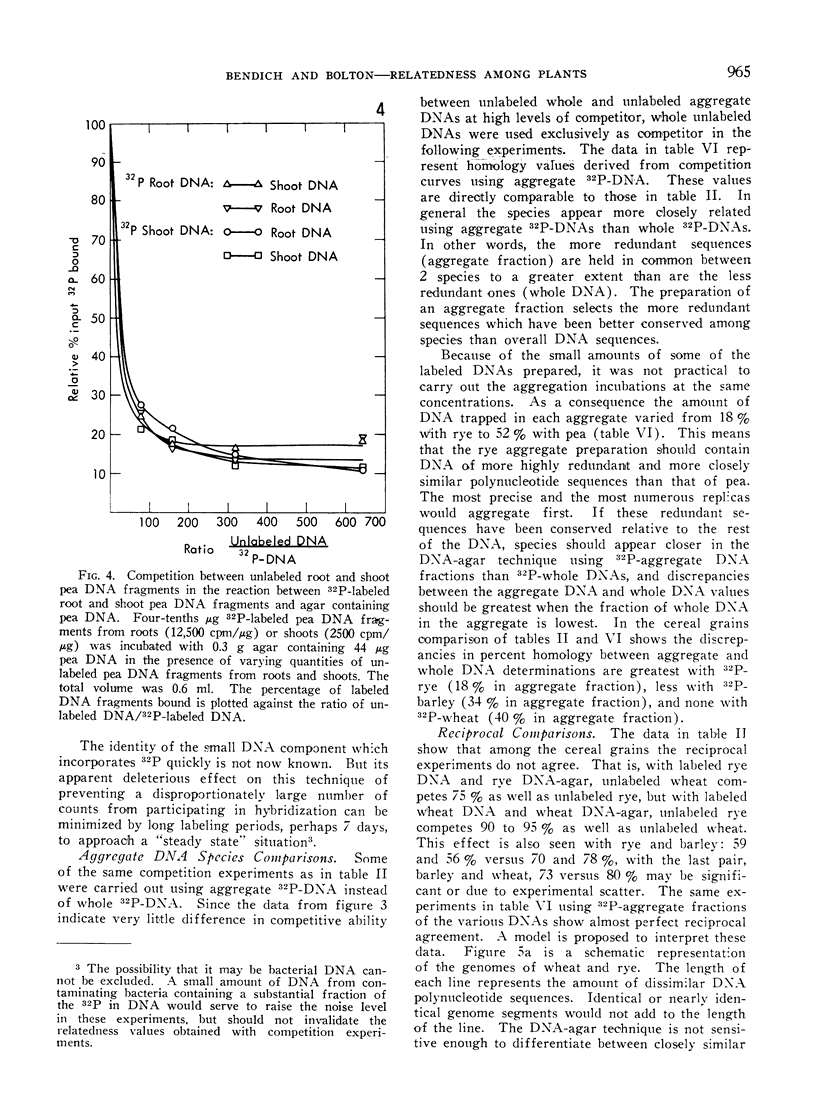
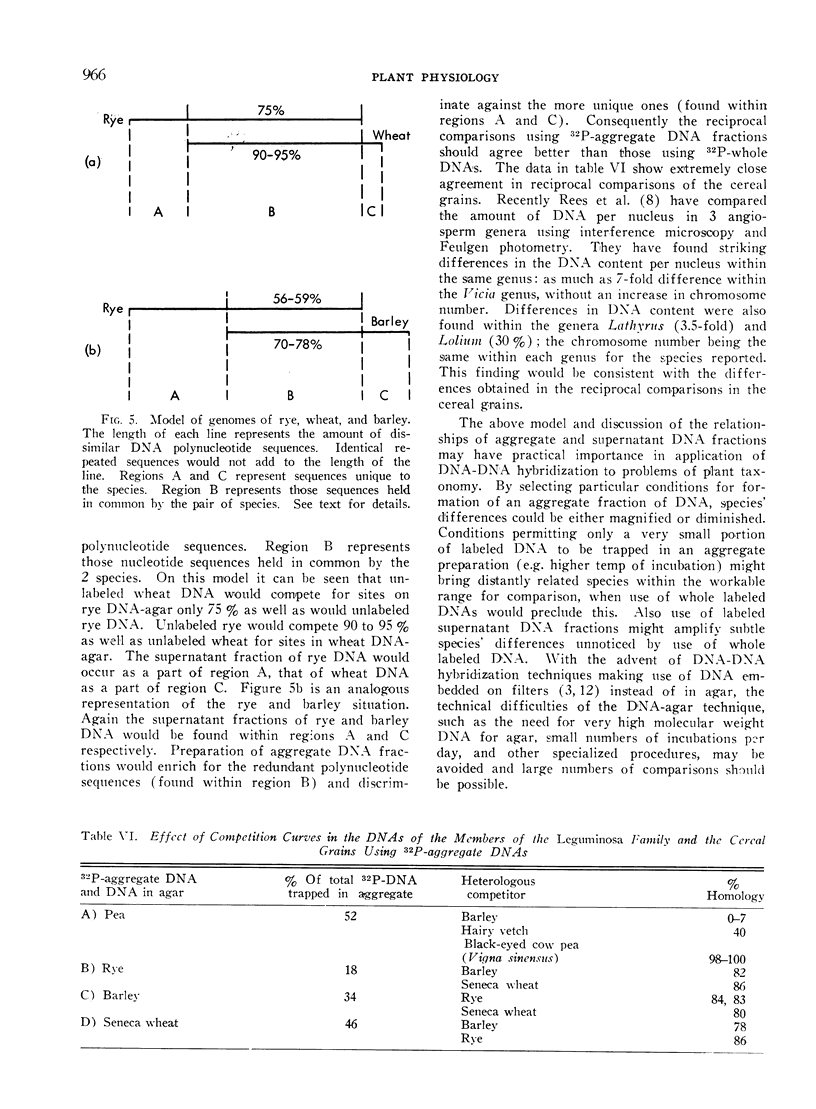
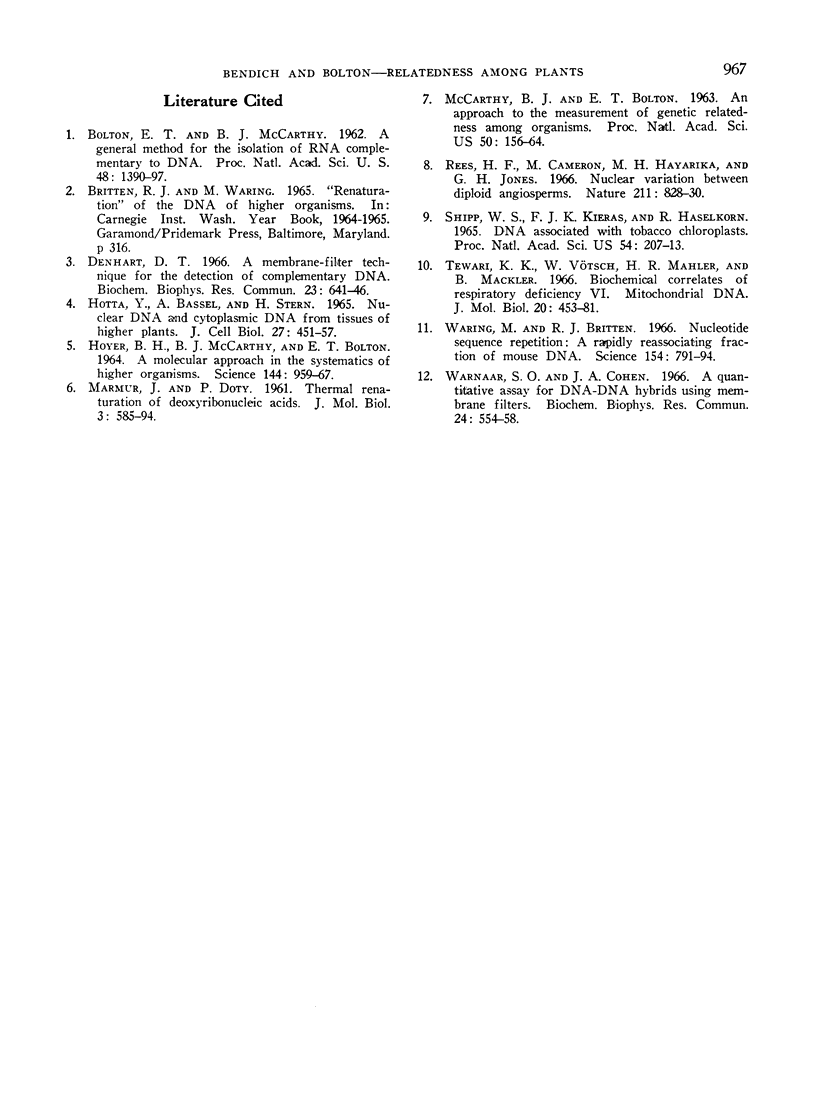
Selected References
These references are in PubMed. This may not be the complete list of references from this article.
- BOLTON E. T., McCARTHY B. J. A general method for the isolation of RNA complementary to DNA. Proc Natl Acad Sci U S A. 1962 Aug;48:1390–1397. doi: 10.1073/pnas.48.8.1390. [DOI] [PMC free article] [PubMed] [Google Scholar]
- Denhardt D. T. A membrane-filter technique for the detection of complementary DNA. Biochem Biophys Res Commun. 1966 Jun 13;23(5):641–646. doi: 10.1016/0006-291x(66)90447-5. [DOI] [PubMed] [Google Scholar]
- HYER B. H., MCCARTHY B. J., BOLTON E. T. A MOLECULAR APPROACH IN THE SYSTEMATICS OF HIGHER ORGANISMS. DNA INTERACTIONS PROVIDE A BASIS FOR DETECTING COMMON POLYNUCLEOTIDE SEQUENCES AMONG DIVERSE ORGANISMS. Science. 1964 May 22;144(3621):959–967. doi: 10.1126/science.144.3621.959. [DOI] [PubMed] [Google Scholar]
- Hotta Y., Bassel A., Stern H. Nuclear DNA and cytoplasmic DNA from tissues of higher plants. J Cell Biol. 1965 Dec;27(3):451–457. doi: 10.1083/jcb.27.3.451. [DOI] [PMC free article] [PubMed] [Google Scholar]
- MARMUR J., DOTY P. Thermal renaturation of deoxyribonucleic acids. J Mol Biol. 1961 Oct;3:585–594. doi: 10.1016/s0022-2836(61)80023-5. [DOI] [PubMed] [Google Scholar]
- MCCARTHY B. J., BOLTON E. T. An approach to the measurement of genetic relatedness among organisms. Proc Natl Acad Sci U S A. 1963 Jul;50:156–164. doi: 10.1073/pnas.50.1.156. [DOI] [PMC free article] [PubMed] [Google Scholar]
- Rees H., Cameron F. M., Hazarika M. H., Jones G. H. Nuclear variation between diploid angiosperms. Nature. 1966 Aug 20;211(5051):828–830. doi: 10.1038/211828a0. [DOI] [PubMed] [Google Scholar]
- Shipp W. S., Kieras F. J., Haselkorn R. DNA associated with tobacco chloroplasts. Proc Natl Acad Sci U S A. 1965 Jul;54(1):207–213. doi: 10.1073/pnas.54.1.207. [DOI] [PMC free article] [PubMed] [Google Scholar]
- Tewari K. K., Vötsch W., Mahler H. R., Mackler B. Biochemical correlates of respiratory deficiency. VI. Mitochondrial DNA. J Mol Biol. 1966 Oct;20(3):453–481. doi: 10.1016/0022-2836(66)90003-9. [DOI] [PubMed] [Google Scholar]
- Waring M., Britten R. J. Nucleotide sequence repetition: a rapidly reassociating fraction of mouse DNA. Science. 1966 Nov 11;154(3750):791–794. doi: 10.1126/science.154.3750.791. [DOI] [PubMed] [Google Scholar]
- Warmaar S. O., Cohen J. A. A quantitative assay for DNA-DNA hybrids using membrane filters. Biochem Biophys Res Commun. 1966 Aug 23;24(4):554–558. doi: 10.1016/0006-291x(66)90356-1. [DOI] [PubMed] [Google Scholar]


